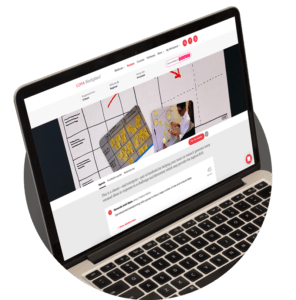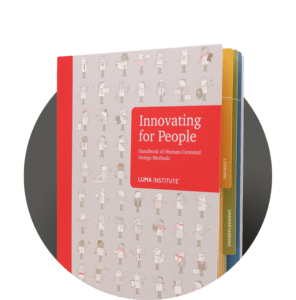Method overview
When working on a project, it is natural to think that all ideas, tasks, or features are of equal importance. But to truly hit the bull’s-eye with your design, you have to recognize what matters most to people, and aim for that as your goal. It will help ensure your design’s effectiveness in the world and will uphold the value of a human-centered approach. Therefore, it is necessary to prioritize so you can focus on the essentials and subordinate the rest.
By design, a Bull’s-eye Diagram puts a limit on how much you can identify as critical, thus forcing your team to deliberate about essentials before producing anything. Since each successive circle is larger than the bull’s-eye, you must carefully consider what is critical, what is important, and what is merely peripheral. Often this means having to make trade-off decisions. The result, however, is a clear delineation of your team’s consensus about each item’s relative importance. It is a comparatively simple method of making difficult decisions.
The benefits of this method
- Helps you determine what is most essential.
- Facilitates productive discussion.
- Builds consensus.
- Helps your team develop a plan of action.

Quick guide
- Identify a project that requires prioritization.
- Make a large poster with 3 concentric circles.
- Label the circles: Primary, Secondary, Tertiary.
- Form a team to conduct an analysis. Gather a set of data (e.g., issues, features, etc).
- Divide the data into small units.
- Print small strips of paper or write on sticky notes.
- Debate the relative importance of each item.
- Plot the data on the target, and set priorities.
Helpful hints
- Size the center ring to fit a limited number of items.
- Enforce a time limit on each round of deliberation.
- Remember that tertiary doesn’t mean irrelevant.
Combining LUMA methods into design recipes
The methods in the LUMA System are great on their own, but they are really powerful when combined into design recipes. Just like when you combine ingredients to make a tasty meal, you can also combine design methods to address challenges such as improving workplace culture or uncovering customer insights.
An example of a recipe from LUMA Workplace®:


Want to learn more about LUMA methods?


